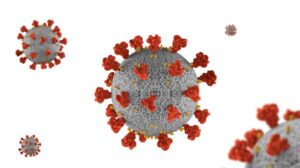Health disparities report looks at concerning and hopeful trends in New York
2 min read
Food insecurity increased 27% for New York households led by an adult without a high school education, and poverty for households headed by an adult with a high school education increased 18%, according to a report from the United Health Foundation.
The inaugural 2021 Health Disparities report looks at more than 30 health-related measures gleaned from data collected by the United Health Foundation, the philanthropic arm of UnitedHealth Group. The data does not include 2020.
“This report, in particular, looks at the breadth, depth and persistence of those disparities across our nation,” said Dr. Rhonda Randall, chief medical officer of UnitedHealthcare Employer and Individual, part of UnitedHealth Group. “And we look at those across the population that includes gender, race, and ethnicity, people who live in rural versus urban communities, those who have not completed a high school education versus those who have more than a college education income level, to look at those disparities so that we can continue to advance health equity.”
Each state has strengths and opportunities, according to Randall. New York state’s income inequality has increased since 2010 and is now higher than the national ratio. The report also found high disparities between Hispanics and whites in the area of severe housing problems.
Another disparity was low birthweight, which increased in Asian/Pacific Islander infants.
“Starting off right with a healthy birth weight sets you up for health, a healthier lifetime and in urban areas versus rural areas in New York, there was a low disparity between birth rates compared to some other states,” Randall said. “As far as areas where New York can improve, education. seems to have a significant tie as those who have not completed high school, versus those who graduated from college. Those who’ve graduated from college are much more likely to be physically active than those who haven’t finished high school.”
Some of the key national trends are the number of people with health insurance, which increased 37% since 2010, and improvements in infant mortality.
“But there’s still some disparities among races with infant mortality,” Randall said. “We saw improvements in people who are living with severe housing problems as well. But as far as the concerns and the disparities that are either worsening or continuing to persist, mental health disparities were worsening. And that concerns us because that’s one of the measures that I’m going to be watching very carefully post-pandemic because we know there was a significant impact on mental health.”
Other findings from the report:
• Depression in adults with less than a high school education decreased by 24% between 2011-13 and 2017-19.
• Smoking among Black adults was down 28% in the same time period.
• The unemployment rate for multiracial civilians was down 34%.
This article was originally posted on Health disparities report looks at concerning and hopeful trends in New York







